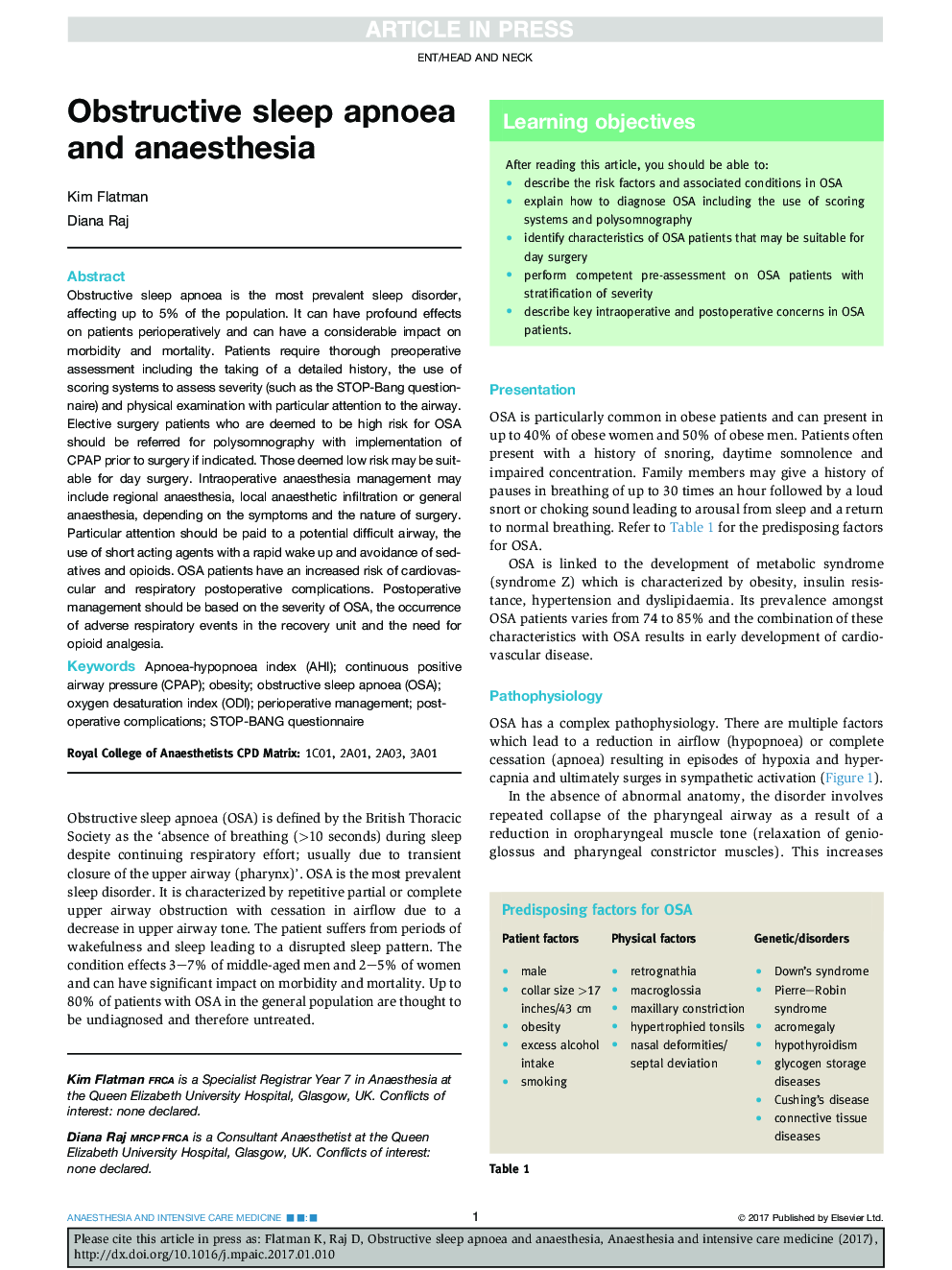| Article ID | Journal | Published Year | Pages | File Type |
|---|---|---|---|---|
| 5580209 | Anaesthesia & Intensive Care Medicine | 2017 | 5 Pages |
Abstract
Obstructive sleep apnoea is the most prevalent sleep disorder, affecting up to 5% of the population. It can have profound effects on patients perioperatively and can have a considerable impact on morbidity and mortality. Patients require thorough preoperative assessment including the taking of a detailed history, the use of scoring systems to assess severity (such as the STOP-Bang questionnaire) and physical examination with particular attention to the airway. Elective surgery patients who are deemed to be high risk for OSA should be referred for polysomnography with implementation of CPAP prior to surgery if indicated. Those deemed low risk may be suitable for day surgery. Intraoperative anaesthesia management may include regional anaesthesia, local anaesthetic infiltration or general anaesthesia, depending on the symptoms and the nature of surgery. Particular attention should be paid to a potential difficult airway, the use of short acting agents with a rapid wake up and avoidance of sedatives and opioids. OSA patients have an increased risk of cardiovascular and respiratory postoperative complications. Postoperative management should be based on the severity of OSA, the occurrence of adverse respiratory events in the recovery unit and the need for opioid analgesia.
Keywords
Related Topics
Health Sciences
Medicine and Dentistry
Anesthesiology and Pain Medicine
Authors
Kim Flatman, Diana Raj,
